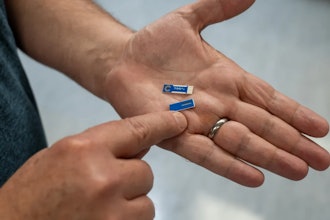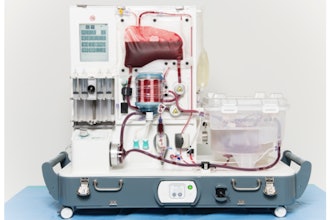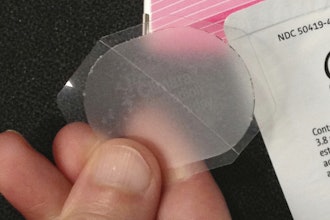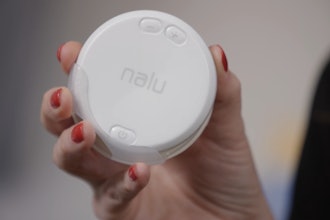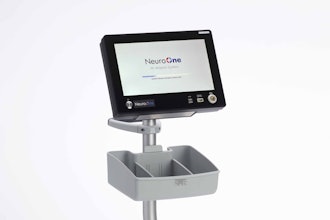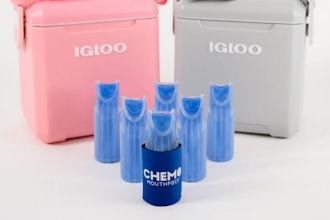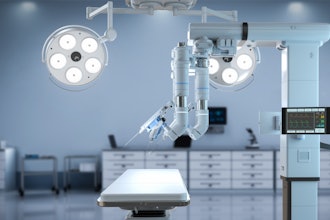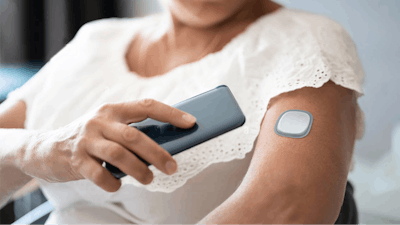
We are in the midst of a sea change in wearable medical device technology. Consumer companies are pursuing medical approval for their devices, and medical manufacturers are entering the consumer space, blurring the lines between consumer and medical wearables.
This shift has been spurred by a combination of factors, including:
- The advent of the "medsumer" (medical + consumer), people who are increasingly taking ownership of their healthcare, buying and using wearable devices to monitor health indicators and interface with caregivers.
- Healthcare transitioning out of traditional clinical settings and into the home.
- Rising costs that emphasize remote patient monitoring, disease prevention, and early detection.
- Enhanced device capabilities, including accurate bio-measurements, prolonged battery life, and data collection and communication.
- The prevalence of chronic disease – nearly 60%1 of Americans are living with chronic disease, while research has shown that digital disease management can improve medical outcomes. Examples include reducing the three-month rate of major cardiovascular events by 45% and reducing 30-day patient readmissions by 50%.2
These factors have created lucrative opportunities for wearable medical devices, as the global market is projected to eclipse $428 billion by 2030.3
While consumer companies and medical manufacturers share the goal of getting innovative, profitable products to users, there are significant differences between commercializing a consumer wearable and a medical wearable. Market success will depend on each sector's ability to learn from the other's playbook.
1. Design for UX
All wearables must be designed to deliver an exceptional user experience (UX). Often, medical manufacturers focus on functionality and results. Their devices may be adept at bio-measurements but are often uncomfortable and unsightly – not user-friendly.
Medical manufacturers need to understand end-user needs and design wearables that are not only safe and effective but also comfortable, unobtrusive and aesthetically pleasing.
Comfort considerations include:
- Pressure-sensitive adhesives
- Stretchable, body-conforming textiles
- Body process impacts, such as water ingress from sweat and showers
Other considerations include wireless communication and power management – features that should be integrated without significantly increasing size or cost. Interoperability is also a factor, as medical wearables can leverage APIs to work with popular consumer health applications.
For consumer companies, it's important to understand that UX extends beyond the wearer to include clinicians. It's not enough to design a watch that monitors heart rhythms.
 Design of a medical wearable must consider both patient and clinician user experience (UX) in addition to ensuring functionality and results.
Design of a medical wearable must consider both patient and clinician user experience (UX) in addition to ensuring functionality and results.
Companies must prove their devices communicate accurate measurements and develop accompanying applications that make it easy for clinicians to read and analyze data.
2. Explore New Paths to Market
Both consumer companies and medical manufacturers must explore sales and marketing channels that may be new to their businesses.
Traditionally, consumer companies market directly to consumers or retailers. Now, they need to pursue channels that reach hospitals, clinics and medical distributors.
Medical manufacturers may be interested in marketing directly to consumers. That creates an entirely new marketing ideology for many manufacturers, which now must consider:
- Consumer branding and overall customer experience (CX)
- Consumer-facing marketing materials, including websites, social media, and email
- Retail partners
- B2C sales force and distributors
- OEM medical device partners
3. Regulatory Requirements
Medical manufacturers are well-versed in regulatory requirements and how to earn FDA clearance, but consumer companies are often unfamiliar with that regulatory process – which can lead to costly delays or doom devices before they reach the market.
Consumer companies wanting to enter the medical space must:
- Prepare for clinical trials that prove data integrity and patient safety
- Adhere to standards such as ISO 13485
- Include software as part of the approval process and ensure apps and devices comply with HIPAA laws and prevent data breaches
- Understand different clearance paths and how leveraging predicates can speed the process and reduce costs. For example, a wearable might gain clearance from the 510(k) pathway based on a previous De Novo clearance of a similar device.
- Validate designs and processes, then prove safety and efficacy. Consumer companies can't rely on the Minimum Viable Product (MVP) model because they can't make significant iterations after going to market without resubmitting to regulatory bodies. Both consumer and medical companies should familiarize themselves with new FDA guidelines4, which prioritize clinical trial quality and data integrity to facilitate medical device development.
4. Reimbursement
Consumer companies need to ensure their products meet reimbursement criteria. That means wearables must achieve favorable reimbursement from payers such as Centers for Medicare & Medicaid Services (CMS) and private insurers.
Both consumer companies and medical manufacturers must identify their reimbursement strategies early – in tandem with regulatory strategies – to ensure commercial viability. To be eligible for reimbursement, a device must be medically necessary and fall under existing Common Procedure Coding (CPT) codes. In general, reimbursement is likely for medically necessary wearables such as insulin pumps and hearing aids.
Note that reimbursement extends beyond the device to include clinician services. For example, some CPT codes allow reimbursement for clinicians to analyze data or to train patients how to use remote monitoring devices.
Tips for Success
1. Develop consumer and medical versions simultaneously
Simultaneous development accelerates time to market and reduces costs by 10 to 100 times.
 A comparison of development timelines for commercial and medical wearable devices.Intricon
A comparison of development timelines for commercial and medical wearable devices.Intricon
2. Address regulatory and reimbursement in tandem
Solving regulatory and reimbursement challenges early ensures commercial viability later.
3. Design for manufacturability
Ensure that wearables can be manufactured quickly, economically, and at scale while yielding high-quality, reliable devices at profitable price points.
 Experienced development and manufacturing partners help ensure that medical wearables are manufactured quickly, economically, and at scale while yielding high-quality, reliable devices at profitable price points.Intricon
Experienced development and manufacturing partners help ensure that medical wearables are manufactured quickly, economically, and at scale while yielding high-quality, reliable devices at profitable price points.Intricon
4. Allow time and budget for regulatory activities
Budget time and money for design verifications and validations, process validations, and clinical and regulatory activities.
5. Evaluate commercial viability
Evaluate commercial viability during the design phase to ensure your device meets market demand and is reimbursable and profitable. Consider:
- Who needs your device, and can users afford it?
- Will CMS and insurance providers cover it?
- Is there market precedence?
- Is there an existing CPT code?
6. Work with an experienced development and manufacturing provider
Experienced vendor partners understand the nuances of regulatory pathways, reimbursement, marketing, and designing for manufacturability for consumer-like devices specific to the medical market. Working with an experienced partner can accelerate time to market, reduce costs, and give your wearable medical device the best chance of success.
Dave Liebl is Chief Commercial and Technology Officer at Intricon. For four decades, Intricon has improved and extended people's lives by developing and manufacturing sensor-driven micromedical devices. Intricon partners with medical device companies, providing unique microelectronic expertise -- including miniature molding through final assembly – and regulatory guidance, supply chain optimization, and scalable production, exclusively for the medical market. Intricon brings the world's smallest, smartest new and next generation devices to life.
Sources:
- https://www.statista.com/topics/8951/chronic-disease-prevention-in-the-us/#topicOverview
- https://www.mckinsey.com/industries/life-sciences/our-insights/the-health-benefits-and-business-potential-of-digital-therapeutics
- https://www.fortunebusinessinsights.com/industry-reports/wearable-medical-devices-market-101070
- https://www.fda.gov/news-events/press-announcements/fda-announces-additional-steps-modernize-clinical-trials
















